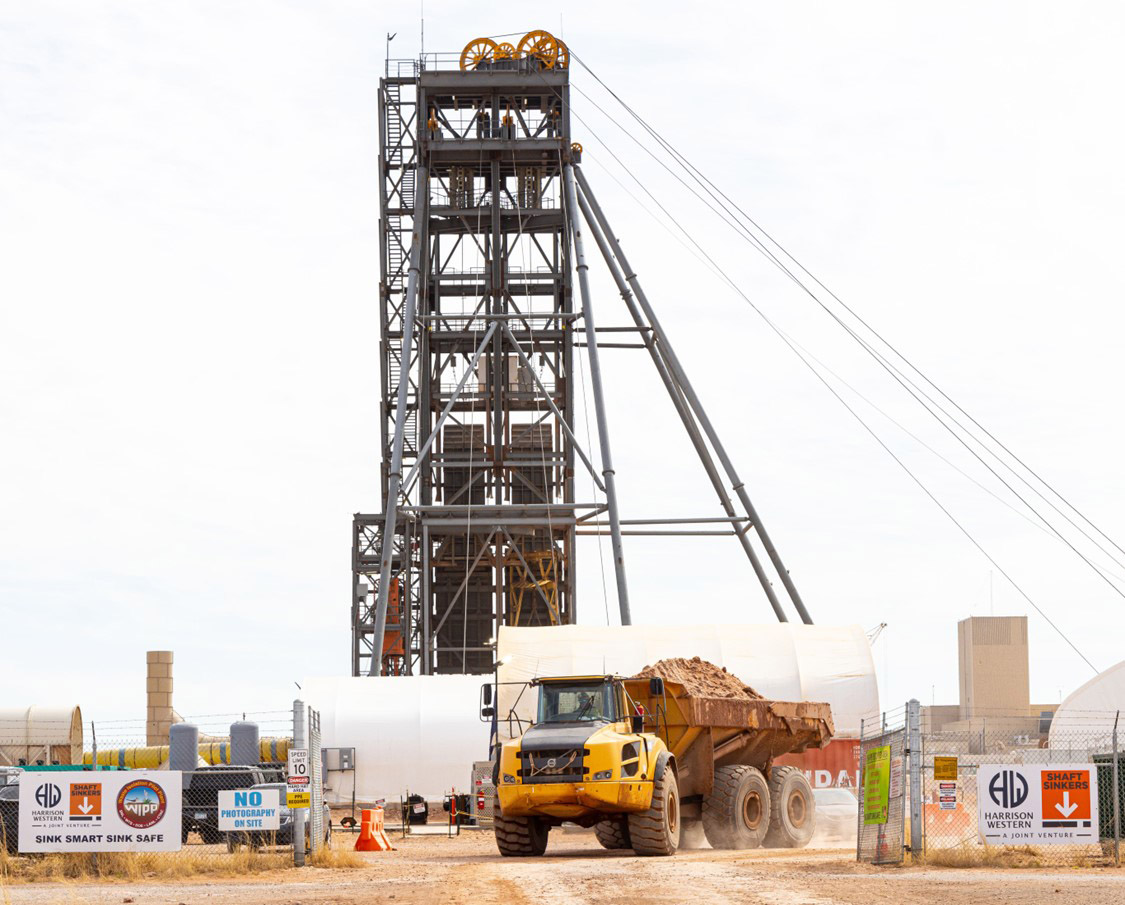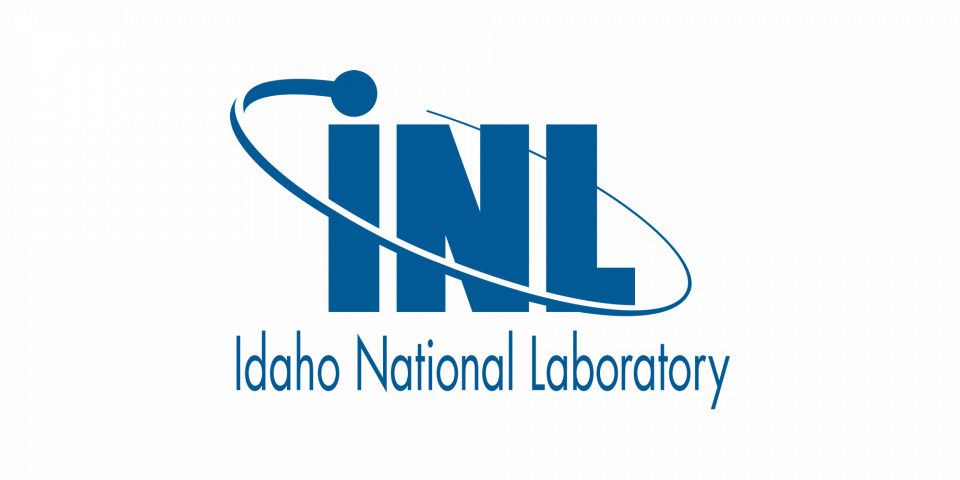WIPP utility shaft reaches station depth milestone

A truck hauls excavated salt away from the WIPP utility shaft project, marked by a large aboveground steel headframe. The shaft has reached the depth necessary to allow horizontal tunneling work to begin, which will connect the shaft to the WIPP underground repository complex. (Photo: DOE)
The Department of Energy’s Carlsbad Field Office announced that it has made a significant step toward increasing airflow to the Waste Isolation Pilot Plant (WIPP) underground with the excavation of a new utility shaft. According to the office, crews working on the shaft recently reached an underground depth, known as station depth, that will allow horizontal tunneling work to begin on connecting the shaft to the WIPP repository complex.
Located in southeastern New Mexico, the repository for defense-related transuranic waste sits 2,150 feet below ground level. Airflow to the underground has been restricted following a radiological release in 2014.
When completed, the 26-foot-diameter utility shaft will provide air to WIPP’s new ventilation system, called the Safety Significant Confinement Ventilation System (SSCVS). The increased airflow provided by the system will allow for simultaneous mining, rock bolting, waste emplacement, and maintenance operations.









